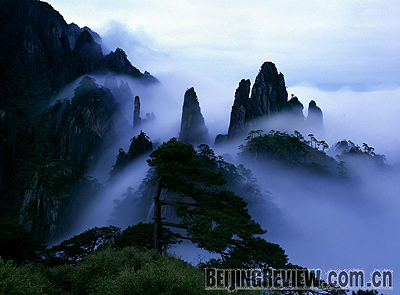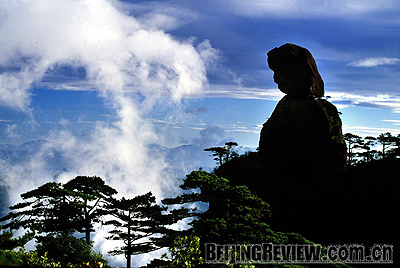|

ETHEREAL: The dreamlike wonderland of Sanqingshan Mountain
China's world heritage site number has again increased after two new additions were announced at the 32nd conference of the World Heritage Committee, held in Quebec, Canada, on July 2-10. China now boasts 37 world heritage listings, ranking third in world terms.

The two new sites are the local houses of the Hakka ethnic group, called Tulou, in south China's Fujian Province, and the scenic Sanqingshan Mountain in central China's Jiangxi Province. Tulou was included as one of the cultural heritage sites of the world and Sanqingshan Mountain as one of the natural heritage sites of the world.
The following is an introduction to these two additions:
The Fujian Tulou
The Tulou refers to the earthen houses located among the mountains in the west and south of Fujian Province. Built between the 12th and 20th centuries, these earthen houses are some of the most unique large-scale house groups in the world.
There are more than 20,000 houses in Yongding County and over 15,000 in Nanjing County, which are the two major regions of Tulou. Shaped round, oval, square or in an arc, a single house is built with compact mud walls and an inner wooden framework.
The Tulou houses were initially built by large families, with the aim of defending invasion of enemies or wild animals, like a small village under one roof. A large house of this type can accommodate up to 800 people at one time, which gave rise to the local description of "a small family kingdom."
The Tulou is the typical house of Hakka people. Resembling giant mushrooms, these houses are basically composed of two or three circles of rooms, with several layers. Inside one house, there are kitchens, dining halls, storerooms, living rooms, guest rooms, and a public area for holding various public ceremonies. Wells, bathrooms and other public facilities for daily life are also incorporated in the design.
Building one such house would take two or three years, while larger versions could take decades with more than one generation working on the house. The fengshui practices used in the construction demostrate the unity between man and nature.
| 